When I began looking into garage door paint ideas, I realized how much a simple color change could completely change the look of my home.
The garage door often takes center stage, and the right shade can either boost or break first impressions. A fresh coat not only improves curb appeal but also complements my home’s architecture and adds real character.
Here, I’ll share the latest color trends, smart ways to match or contrast with the exterior, and simple DIY tips to make the project easy.
With thoughtful choices, a garage door can highlight style, reflect personality, and make any home stand out in the neighborhood.
Does Garage Door Color Really Matter?
A garage door is one of the largest visual elements on a home’s exterior, which makes its color a decision worth careful thought.
The right shade can upgrade curb appeal, unify trim, siding, and landscaping, or create a striking contrast that adds personality.
Considering different garage door color ideas opens up possibilities to complement the home’s architecture or highlight its unique features.
At the same time, practical factors come into play. Darker garage door paint colors may fade more quickly and absorb heat, while lighter tones resist weathering and demand less maintenance. Choosing wisely ensures both beauty and longevity.
Trendy Garage Door Paint Ideas
Choosing the right garage door shade is about more than style; it shapes the whole character of your home.
These classic and on-trend colors work beautifully across architectural styles, helping to raise curb appeal while expressing personality:
1. Classic White
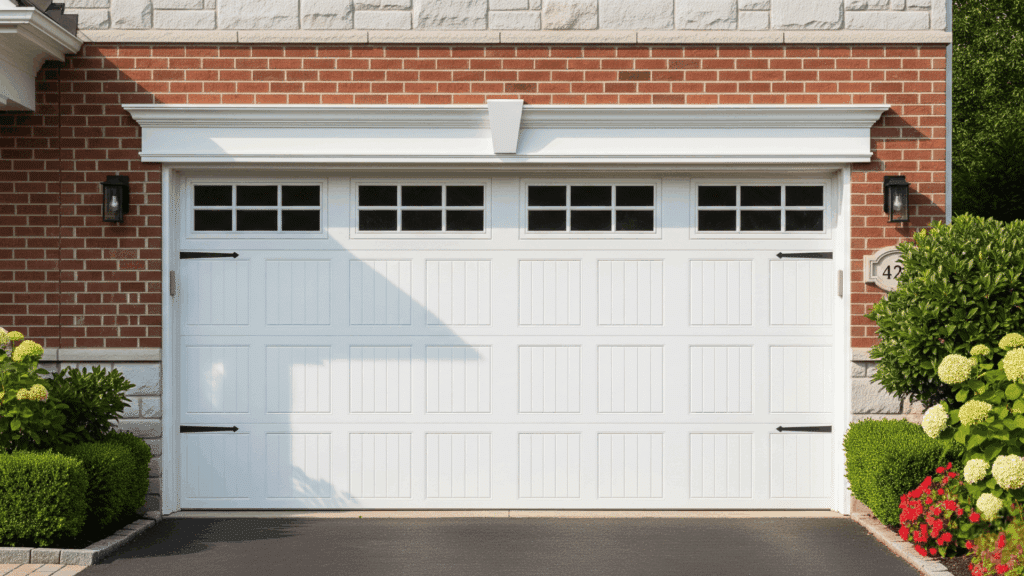
Classic white is crisp, versatile, and effortlessly timeless. It brightens the exterior and pairs well with almost any trim or siding, from traditional brick to modern stone.
Its fresh appearance allows other design elements, like the front entry or landscaping, to shine while maintaining a polished, welcoming look.
White also reflects light, reducing heat absorption and keeping your garage cooler during sunnier months, making it both beautiful and practical for all climates.
2. Matte Black
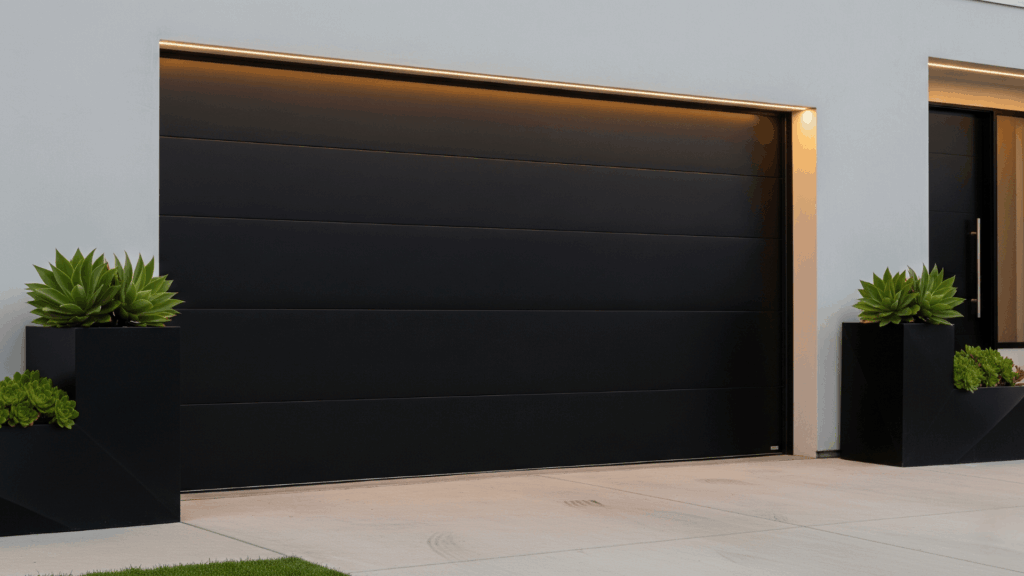
Matte black brings bold drama with a modern edge. It creates a striking focal point, particularly when paired with light exteriors or minimalistic architecture.
Unlike glossy finishes, the matte texture gives it a refined quality without harsh reflections. This color works especially well on contemporary or industrial homes where contrast is key.
Homeowners seeking a garage door that feels sleek, urbane, and current often find matte black the perfect way to make a confident design statement.
3. Charcoal Gray
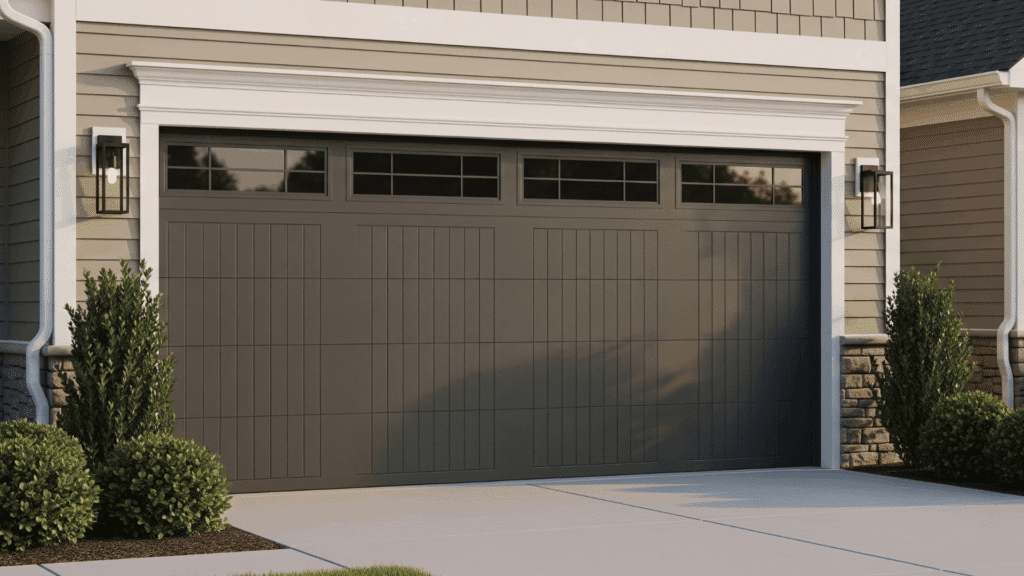
Charcoal gray is a softer alternative to black, offering depth without appearing too stark. It’s a versatile choice that complements both warm and cool palettes, from beige siding to crisp white trim.
This color manages to hide dust and smudges more effectively than lighter shades, making it both stylish and low-maintenance.
Whether your home leans traditional or modern, charcoal gray adds understated finesse while keeping the exterior looking polished year-round.
4. Navy Blue
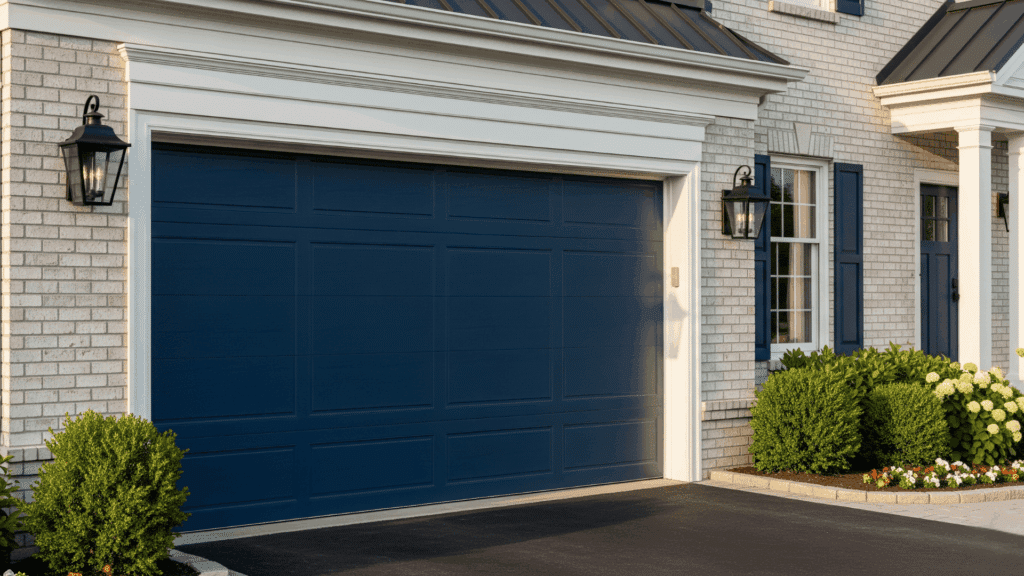
Navy blue is classic yet fashion-forward, adding finesse without overwhelming the façade. It pairs beautifully with white accents for a nautical or coastal vibe, but it also works well with brick or stone for a grounded, ageless feel.
Navy strikes a balance between bold and neutral, allowing it to stand out without clashing.
For homeowners who want a hint of personality while keeping things suave, this shade is a winning choice for lasting curb appeal.
5. Deep Forest Green
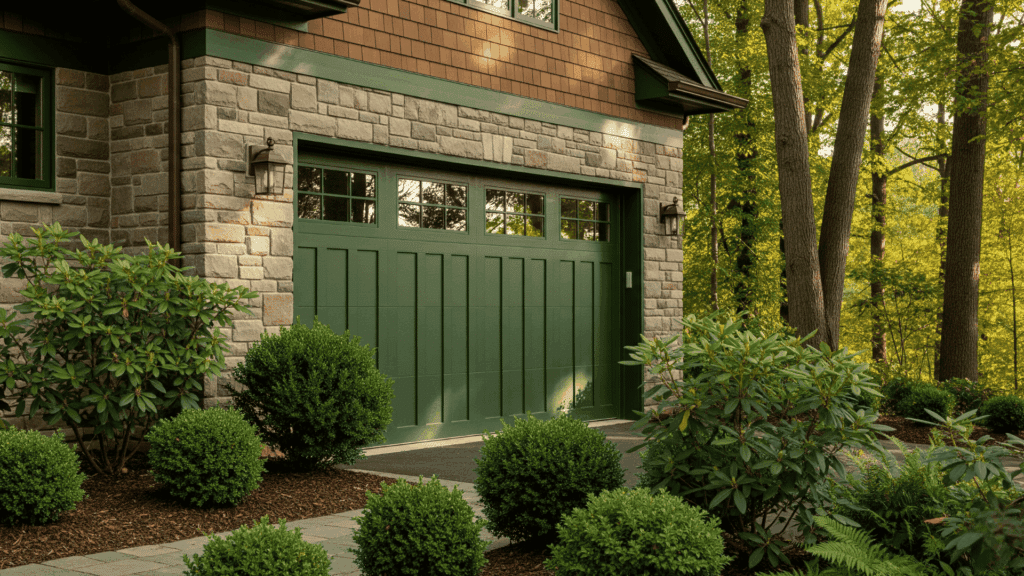
Earthy and grounding, deep forest green creates a strong connection to the natural environment.
It works especially well for Craftsman, rustic, and nature-inspired homes, merging with wood, stone, and rich landscaping. While bold, it radiates calm and class rather than flash.
Paired with warm neutrals and natural textures, forest green feels both welcoming and classic, making it a great pick for anyone seeking harmony with the surrounding landscape.
6. Warm Taupe / Greige
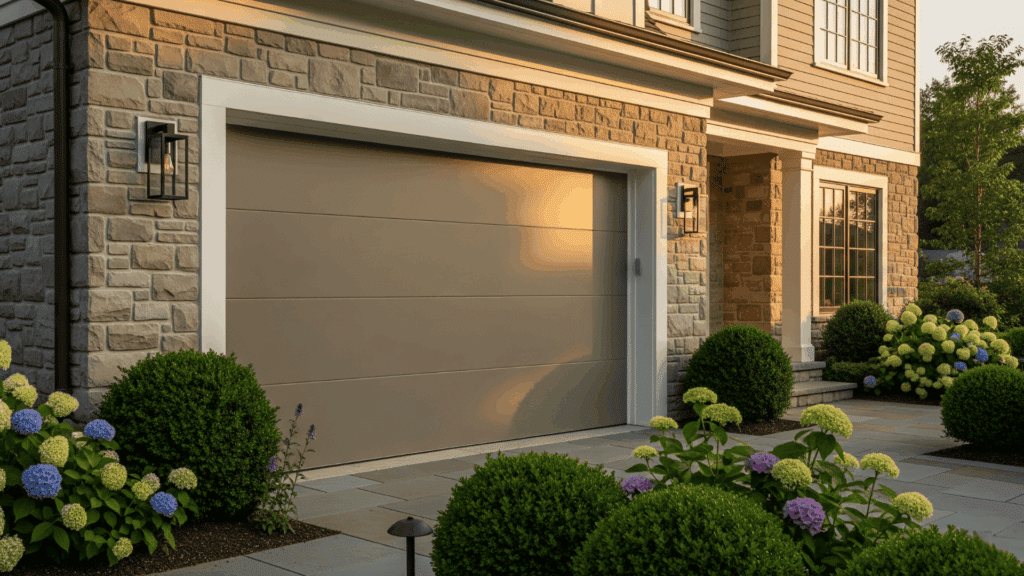
Taupe and greige tones blend culture with practicality. Their warm-neutral undertones provide versatility and balance, offering enough depth to disguise dirt while still feeling polished.
These colors sit comfortably between gray and beige, giving them universal appeal across both traditional and contemporary homes. Warm taupe pairs beautifully with stone exteriors, while greige feels chic against modern minimalistic builds.
For homeowners who want understated grace with easy maintenance, these shades are a dependable long-term choice.
7. Rustic Wood Stain (Walnut, Cedar, Mahogany Tones)
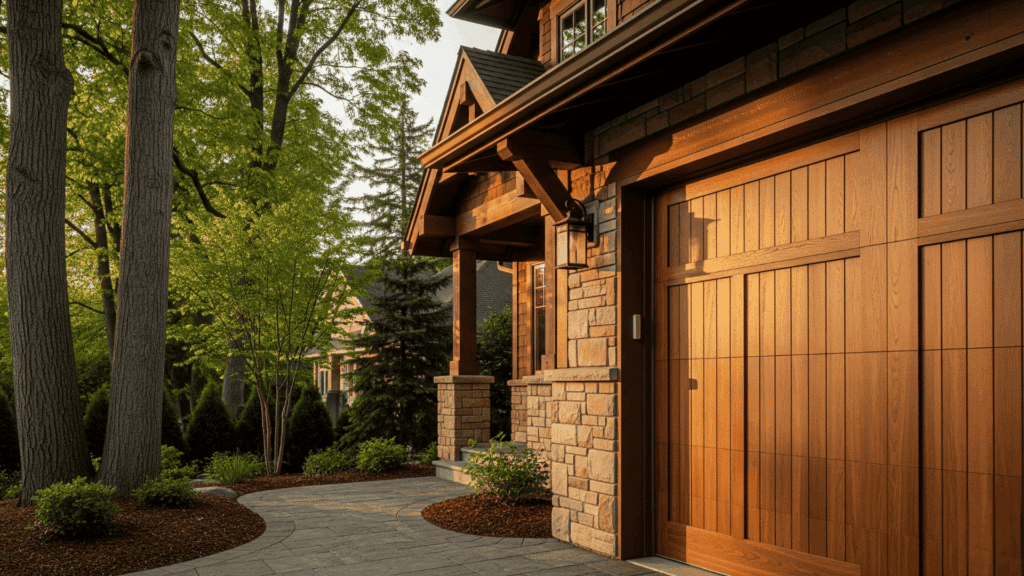
Few choices feel as timeless as a wood stain. Natural tones like walnut, cedar, or mahogany add depth, warmth, and handcrafted richness to any garage door.
These stains highlight the texture of wood, making them ideal for farmhouse, Craftsman, or lodge-style homes where natural beauty is celebrated.
While wood requires more upkeep than paint, its character and curb appeal are unmatched. The warmth of real or faux-wood finishes makes the garage door feel like a true design centerpiece.
8. Soft Sage Green
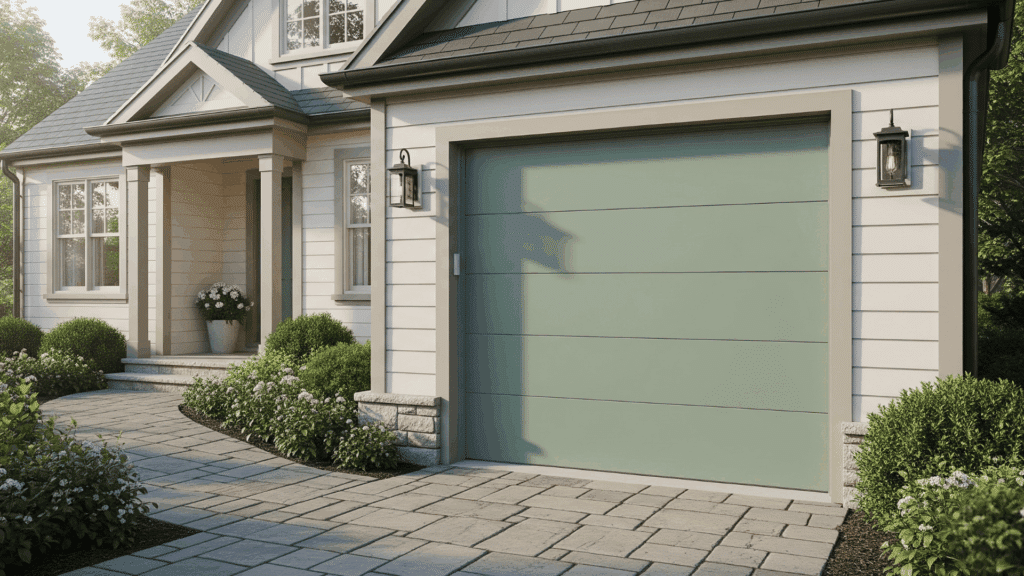
Soft sage has a quiet luxury rooted in nature. Muted and earthy, it introduces subtle personality while remaining easy to pair with neutrals like cream, taupe, or gray.
Unlike brighter greens, sage feels calming and understated, offering a refreshing yet classic effect.
It’s particularly appealing for homes aiming to feel welcoming and connected to the outdoors, striking a balance between individuality and elegance without overwhelming the architectural details.
9. Terracotta / Clay
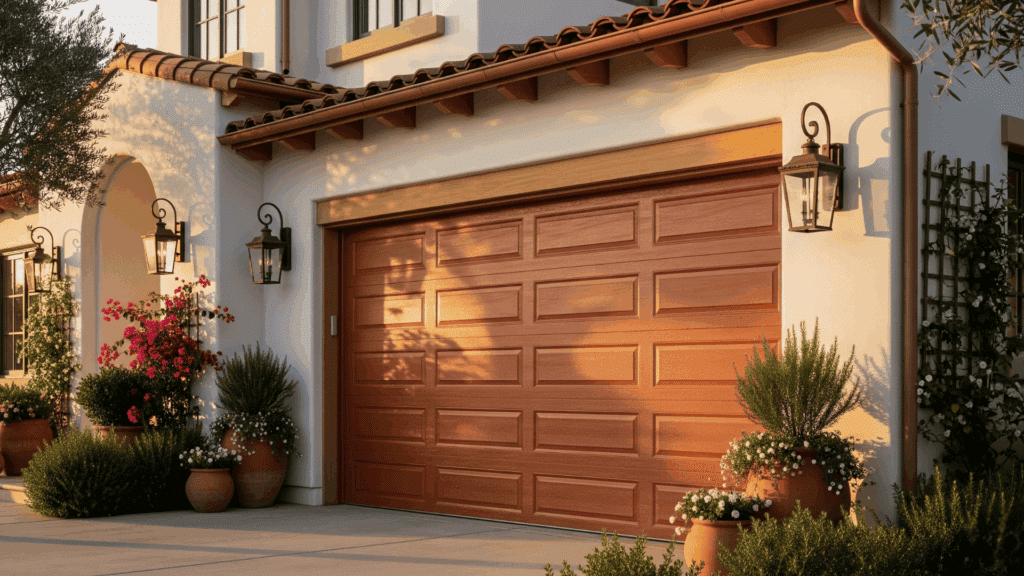
Terracotta or clay tones bring a warm, sun-baked character to a garage door. Inspired by Mediterranean and desert landscapes, these shades pair beautifully with stucco finishes, white accents, or wood details.
They offer color without being overly bold, creating a cozy, lived-in look.
For Spanish Revival, Southwest, or bohemian-style homes, terracotta acts as both a statement and a grounding element, delivering unique warmth and timeless appeal.
10. Slate Blue-Gray
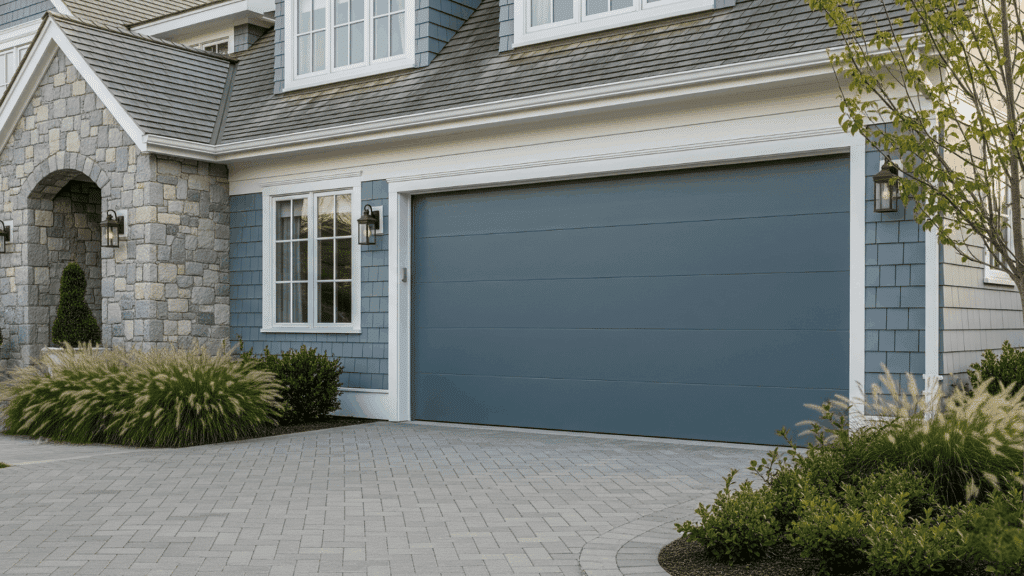
Slate blue-gray bridges classic neutrals with a fresh stroke of color. Its muted tones feel calm and versatile, offering just enough variation to keep things interesting.
It’s ideal for coastal homes or any architecture that benefits from soft, natural colors. This shade pairs effortlessly with crisp white trim, stone, or weathered shingles, bringing a modern yet approachable charm.
Its depth provides poise, making it a stylish alternative to standard grays or blues.
11. Creamy Off-White / Ivory
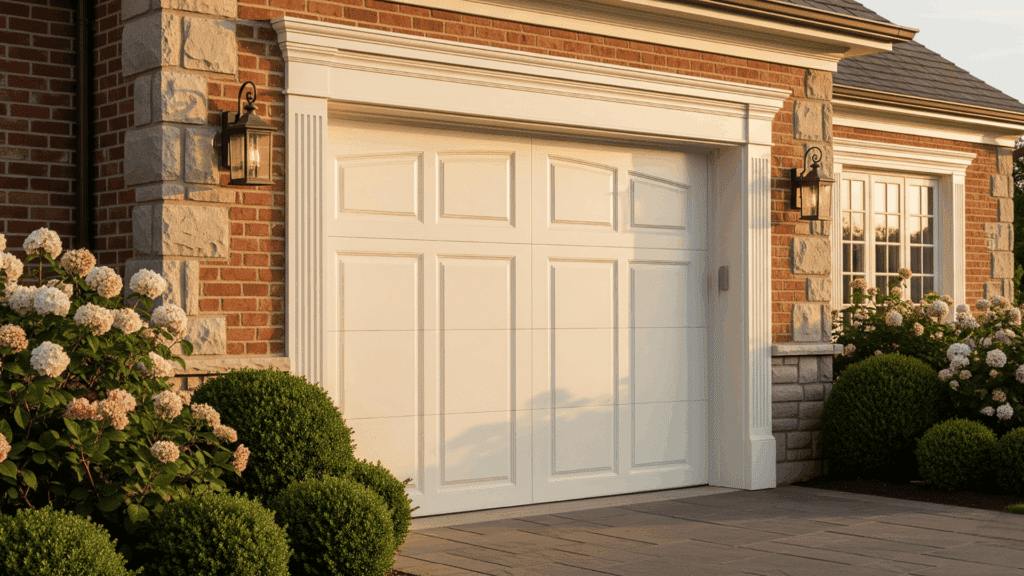
For those who love the brightness of white but want something softer, creamy off-white or ivory is a graceful alternative.
Unlike stark white, these shades add warmth and dimension, blending beautifully with brick, stone, or wood. Their subtle warmth makes a garage feel inviting while still looking clean and polished.
Off-white tones also resist the harsh glare and visible dust that come with bright white, offering a timeless, low-maintenance solution that feels both fresh and welcoming.
How to Choose the Right Color Strategy?
Selecting the ideal garage door color depends on your design objectives, architectural style, local environment, and practical considerations. This table will help you in making quick decisions:
| What it Means | Effect | Examples | |
|---|---|---|---|
| Design Intent | Decide if the door blends, balances, or stands out | Seamless, harmonious, or bold statement | Match siding, complement trim, contrast with dark vs. light |
| Architectural Style | Let your home’s design set direction | Honors and upgrades the architecture | Traditional: taupe, white Modern: black, charcoal Farmhouse: wood, sage |
| Surroundings | Coordinate with exterior tone and landscape | Creates flow with natural or built environment | Warm exteriors: terracotta, taupe Cool exteriors: navy, slate gray |
| Practical Factors | Consider upkeep, weather, and resale | Balances beauty with durability | Dark = heat + fading Light neutrals = cooler + low-maintenance |
Narrow choices to two, then paint large samples directly on the garage. Morning and evening light can change a color more than you think.
Paint Prep and Tips for Your Garage Door
A flawless garage door makeover is 70% preparation and 30% painting. Here are the must-know steps before you get in:
- Pick a high-quality exterior-grade paint; acrylic latex resists cracking, while oil-based paint lasts longer on metal doors.
- Power-wash or scrub with a trisodium phosphate (TSP) solution to remove dirt, grease, and mildew.
- Lightly sand glossy surfaces so the new paint bonds properly and doesn’t peel.
- Prime bare metal or dark colors before applying top coats for durability and true color payoff.
- Test swatches directly on your door and step back 20–30 feet to see how they look in natural light.
With these pro prep steps, you’ll achieve a professional-level finish while avoiding the common issues of peeling, fading, and uneven coverage.
Conclusion
Looking back at these garage door paint ideas, one thing is clear: I’ve come to appreciate just how much influence this single feature has on a home’s character.
Classic shades to bold contrasts, the right choice adds personality and balance while also considering durability and upkeep.
For me, a garage door color isn’t just a finishing stroke; it’s a design decision that ties everything together.
Now it’s your turn: paint a sample, step back, and see the conversion. Ready to refresh your curb appeal? Start with your garage door.
If you were inspired by this, go check out other blogs on the website for more inspiration!














